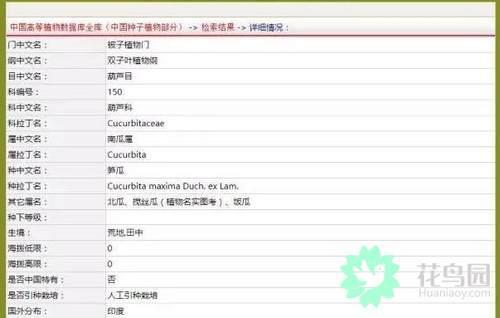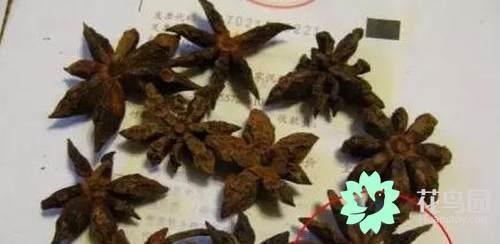Why are there wax gourds, pumpkins and watermelons but not melons?

Since childhood, the editor has been deeply troubled by a question-why there are winter melons, pumpkins and watermelons, but not north melons? In the whole database of Chinese higher plants, we found the name "Beigua", but it never occurred to me that it was a kind of pumpkin.
Three brothers of pumpkin family
In a broad sense, pumpkin refers to the genus Cucurbita Linn. There are three common cultivated species: Chinese pumpkin (Cucurbita moschata), American pumpkin (Cucurbita pepo) and Indian pumpkin (Cucurbita maxima).
Chinese pumpkin is what we usually call pumpkin in a narrow sense, American pumpkin is zucchini, and Indian pumpkin is pumpkin.
In North America, members of the thriving pumpkin family are collectively called "Squash". If you see the picture below, you can see why the pumpkin genus is called the "most prominent family of the cucurbitaceae".
Pumpkin in a broader sense
The shape of the fruit of the three pumpkin brothers is changeable. If you want to distinguish them from the appearance, you should see the stalk and the perianth mark at the top of the fruit, which is commonly known as the "navel".
Pumpkin fruit stalk five-rowed expansion, navel concave; zucchini fruit stalk obvious five-rowed, umbilical drum; North melon fruit stalk is cylindrical, umbilical is a small dot.
The giants in pumpkins are actually "north melons".
"Beigua" is a semi-wild plant. Because of its low yield, without the sweetness of watermelon, the fragrance of wax gourd and the high yield of other pumpkin genera, people do not know much about it.
An immature Beigua
"North melon" originated in Bolivia, Chile and Argentina in South America, and has been sown all over the world. Chinese bamboo melons may be introduced from India, so they are also called "Indian pumpkins".
North melon and pumpkin are very similar, whether the plant, flowers, or even the fruit does not look carefully, it is not easy to find the difference. In fact, the difference between pumpkin and pumpkin is mainly in the fruit: the pumpkin stalk has obvious corrugated, while the pumpkin is round, where the stalk and melon are connected, the pumpkin will swell into a cap, while the pumpkin is clean.
The top of the pumpkin is a bowl scar on which the flowers fall off, while the pumpkin is just a small dot or a ring formed by the atrophy of the stigma and calyx.
If you don't know the pumpkin, you must know the "pumpkin competition" often held abroad. We often see online reports that so-and-so farmers have planted × × kg giant pumpkins, setting new world records.
But the pumpkin that can grow so big is actually a "pumpkin", because only it has the talent to grow so big, which can be seen in its scientific name "Cucurbita maxima" (maxima originally means extreme, maximum).
Most of the so-called "Halloween giant pumpkins" are also "pumpkins"-although they have a similar shape to pumpkins, they can grow to an astonishing size and are tailor-made for Halloween.
However, to grow into such a big "north melon" has no value to eat, melon skin and flesh have begun to fibrosis, otherwise how can you support such a big body? Such a huge melon is just a plaything cultivated by humans.
In the seventies and eighties of the last century, the dialect name of "north melon" in various parts of China was very confused. some people called "zucchini" as "north melon", some people called the entire pumpkin family "north melon", and in some places called wax gourd "north melon".
Therefore, the national standard GB 8854-1988 "vegetable name (1)" issued in 1988 uses "bamboo shoot melon" as the official name of North melon, which has been used ever since.
Can "pumpkin" get rid of drug addiction?
Among the pumpkin brothers, we are familiar with the "Chinese pumpkin". Its wild ancestors originated in Mexico, North America and Guatemala, and then spread to Eurasia. Because pumpkins can be stored for a long time, the Portuguese sailed to China with pumpkins. Pumpkins are likely to land in China from the ports of Guangdong and Fujian and start growing in vast areas of East Asia.
Pumpkin Pictures in Li Shizhen's Compendium of Materia Medica
In the era when opium poisoned the people, people made an amazing discovery: if you eat pumpkins, you don't want to smoke. Pumpkin can treat opium addiction, there are many historical records, such as Daoguang years "Yingde County Chronicles" record: "its white cooked with sugar, can break opium addiction."
Guang Xu's Quyang County Chronicles also recorded: "eating pumpkins and vines can cure opium poppy." But there is no clear record of how many people have been treated.
Pumpkins and pumpkins are gifts from Mr. Columbus
In fact, pumpkins, pumpkins and zucchini are all on our table today thanks to the discovery of the new world by the great navigator Columbus in the great navigation era from the end of the 15th century to the beginning of the 16th century.
The American continent is rich in biological resources and has a wide variety of plants. Ancient Native Americans domesticated, cultivated and cultivated more than 60 kinds of crops in complete isolation from the rest of the world. According to the Mayan literature, the market value of 25 large pumpkins was equal to that of an adult slave.
With Columbus's first voyage to the American continent, it triggered a century of large-scale voyage. The great changes brought about by the various exchanges that followed the connection between the old continent (Europe, Asia, Africa) and the new continent (America).
These exchanges are also known as the Columbus Exchange (Columbian Exchange).
Columbus's discovery and Columbus exchange made a great contribution to China. As you can imagine, there are no potatoes, corn, tomatoes, chili peppers and pumpkins in our food. What earth-shaking changes will take place on the dining table with these gifts of nature?
If there are no potatoes, Saute Spicy Chicken, a national delicacy, will lose her soul. Without tomatoes, scrambled eggs with tomatoes will lose their charm.
If there are no chili peppers, what about Chongqing hotpot, Fish Filets in Hot Chili Oil, Steamed Fish Head with Diced Hot Red Peppers of Hunan, fried meat with chili peppers in Jiangxi, and spicy chicken with more chili than meat? What should the "old godmother" who has gone abroad and become popular all over the world do? Eventually, even duck neck and stinky tofu will lose their luster!
- Prev

This is highly poisonous. Check your kitchen and find it. Throw it away.
Star anise, also known as "spice", is a commonly used cooking seasoning in our lives. But the commonly used star anise is also fake and highly poisonous! "false star anise" Mangcao, also known as false star anise or wild star anise, is similar in shape to star anise. There is a play.
- Next

Cultivation methods and points for attention of Zhu Cherry Blossom simple 3 points to easily raise Zhu Cherry Blossom
The plant of Zhu tasseled flower is short and strangely beautiful, and it is a common ornamental tree species in family horticulture and urban greening, so what should we pay attention to when planting Zhu tasseled flower? Today we will simply talk about the species of breeding Zhu cherry blossoms from three o'clock.
Related
- Wuhan Hospital Iron Tree Blooming Result Was Instantly Frightened by the Gardener Master
- Which variety of camellia is the most fragrant and best? Which one do you like best?
- What is the small blue coat, the breeding methods and matters needing attention of the succulent plant
- Dormancy time and maintenance management of succulent plants during dormancy
- Minas succulent how to raise, Minas succulent plant pictures
- What are the varieties of winter succulent plants
- How to raise succulent plants in twelve rolls? let's take a look at some experience of breeding twelve rolls.
- Attention should be paid to water control for succulent plants during dormant period (winter and summer)
- Watering experience of twelve rolls of succulent plants
- Techniques for fertilizing succulent plants. An article will let you know how to fertilize succulent plants.

